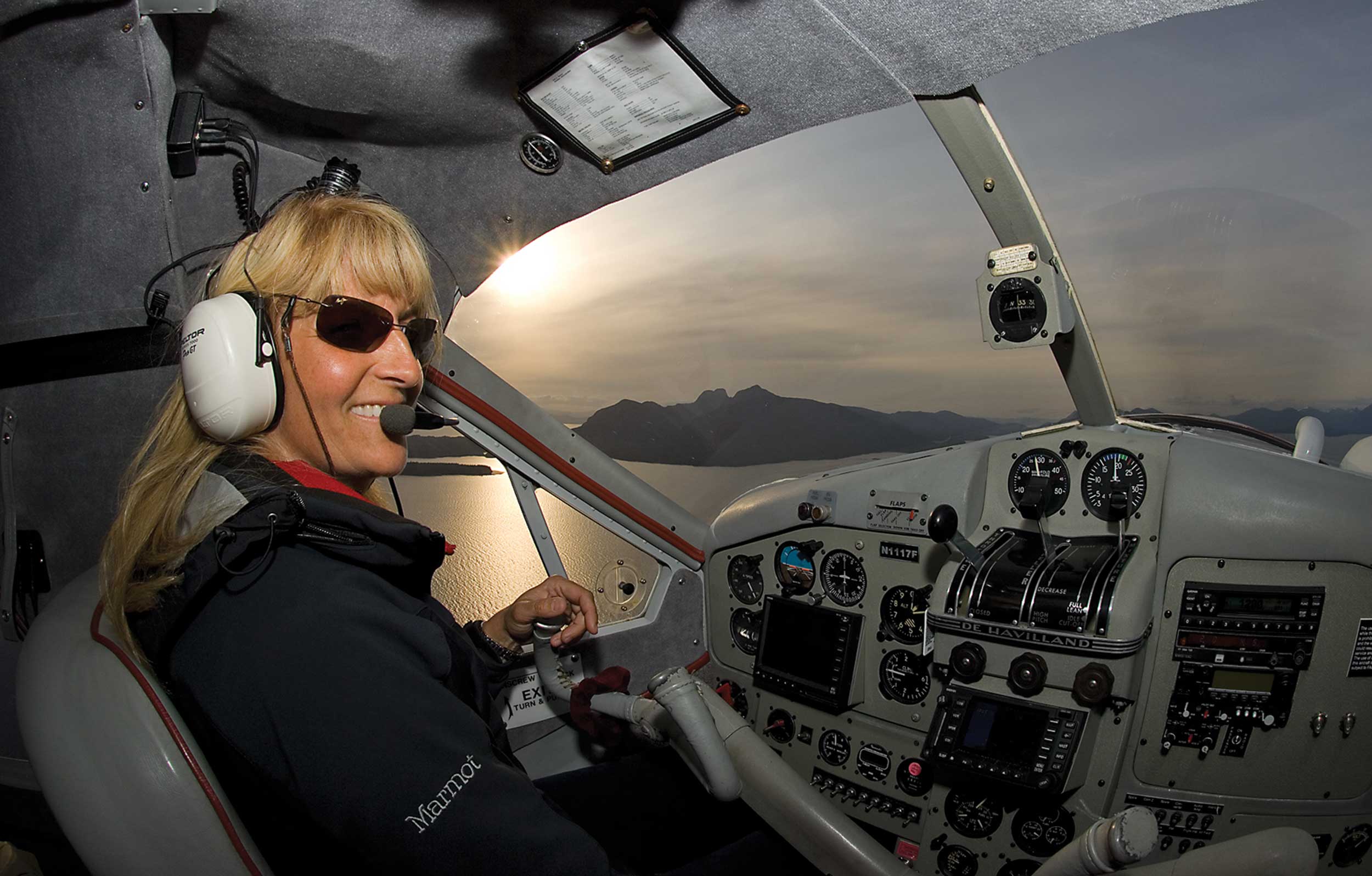 I Get Paid for This
I Get Paid for This
This article first appeared in FLYER in July 2018
The owner of Islands Wings Air Service keeps her eyes peeled for bears, humpback whales and eagles while flying in the Alaskan wilderness
Interview by Yayeri van Baarsen
How did you get into aviation?
My earliest memory of flying was a family holiday back in the 1960s, when they’d still take kids up into the cockpit. Afterwards, they’d give the boys pilot wings and the girls stewardess wings.
However, I told them that wasn’t going to work for me! I’ve wanted to be a pilot all my life and took my first lesson on my 16th birthday.
Tell us about your job…
I’m the owner and pilot of Island Wings Air Service in Ketchikan, Alaska.
With my seaplane I offer everything from sightseeing trips to the Misty Fjords National Monument to guided bear viewing tours.
My work also includes fish spotting, water sample surveys for oyster farming, radio-tracking animals for research, medivacs, and search & rescue – I really enjoy the diversity.
The Alexander Archipelago has 5,000 islands and no bridges or roads, and everything, even grocery shopping, is done by floatplane or boat.
Here there are no runways or towers, it’s all uncontrolled airspace, which gives you an unparalleled sense of freedom. There’s no one holding your hand, so you have to decide all the variables by yourself. Even after hundreds of landings at the same spot, the next one will be different.
Flying in the wilderness sometimes involves a lot of tight turning – some freshwater lakes are too small to take off in a straight line, so you have to do it in circles.
Landing on the ocean can be challenging given this area’s extreme tidal variance. In the time it takes to load the aeroplane on the beach, the tide can drop so quickly that the aeroplane can go dry, which forces you to wait for the next incoming tide. Alaska isn’t an easy place to fly, but these challenges keep it interesting.
I love taking tourists on scenic flights, looking for bears, mountain goats and deer. Sometimes they’re so overwhelmed by the Alaskan beauty that they start crying.
I equally love fish spotting – to locate herring, you have to find the animals that eat them, which means I actually get paid to look for humpback whales, sea lions, seals and eagles!
What training did you have?
After my PPL, I obtained my CPL, instrument and seaplane rating. During my first seven years in Ketchikan, I worked on a commercial fishing boat over each summer, while flying newspapers, lobsters and sailing captains around the Caribbean in winter.
Surviving the first years of Island Wings was very challenging – when you’re the new kid on the block, the locals don’t want to fly with you. It actually took a whole season before a company director joined me in the aeroplane.
I got my first contract due to my fishing job, where one of my tasks was driving the boat. Travelling slowly, at 9kt, I’d observe the shoreline long enough to burn a geographical image
into my mind.
Geography is a huge factor in Alaskan flying, as is the weather, which can change within minutes. My meteorology degree helped, but acquiring local knowledge of terrain and elements was of the utmost importance.
What’s been your favourite flight?
It’d be impossible to pick just one! Outside the busy summer season, I go on amazing trips. They range from landing at a remote island, to enjoy a bonfire on the beach to flying to a high alpine lake, to fish for trout or hike to a glacier. I also enjoy flying to local hot springs for a soak in the natural pools with my friends.
And your favourite airfield?
Anywhere, as long as it’s liquid. I love landing on water and was hooked from my first floatplane ride. It depends on the weather – 2ft waves make for a very choppy landing!
But generally, landing on water is smoother than on tarmac. With calm conditions, passengers always say they hadn’t realised we’ve already landed – even I’ve had times where I needed to check if spray was already coming off the floats.
Do you get to fly much outside work?
Yes! Work aside, flying is also a pleasure. This summer, I plan more days off to go flying. There are still at least 200 lakes I want to go camping at.
What’s the most valuable career advice you’ve received?
“If you ever stop learning, it’s time to quit.” The late Jack Cousins told me that. Apart from being a bush pilot, flight instructor and mechanic, he was also my mentor and he taught me so much.
Flying CV
Michelle Masden flies from one of the world’s busiest floatplane bases, Ketchikan, which handles 800-1,200 operations per day, and has landed on hundreds of lakes and ocean inlets
Started work 1993
Now flying de Havilland Beaver
Favourite de Havilland Beaver – “Reliable, forgiving and tough, it’s a fabulous machine”
Hours at job start 6,000
Hours now 22,000
